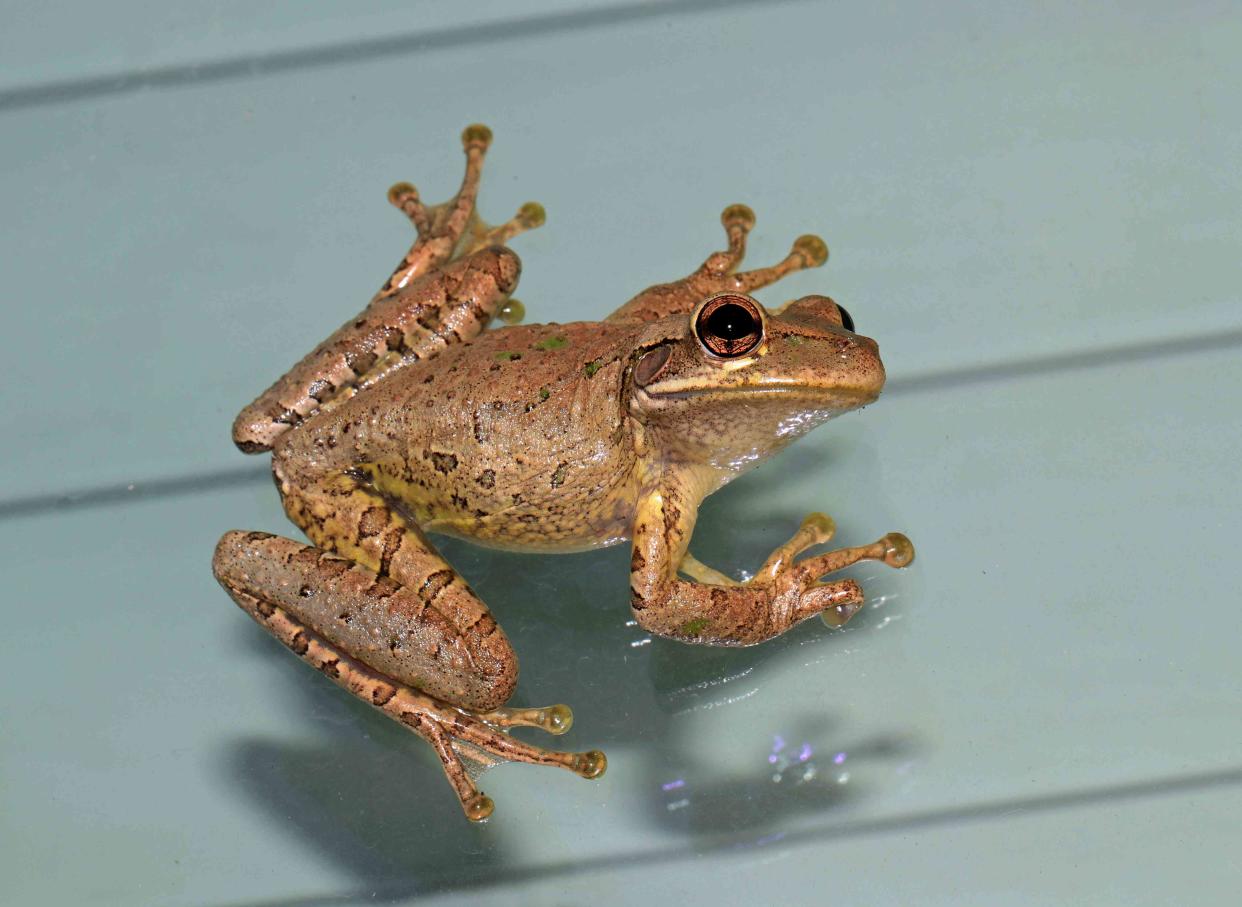Invasive Species Of Frog Now Being Spotted In Georgia

Zen Rial/Getty Images
Georgia officials are asking people to keep an eye out for the Cuban tree frog, an invasive species that can grow as big as your hand and is known to eat native frogs, lizards, and snakes, in addition to insects.
Florida has been contending with the invasive Cuban tree frog for at least 100 years, according to the IFAS Extension at the University of Florida. The frogs are now well established as far north as the Panhandle, and the University of Georgia says there is a breeding population on Jekyll Island. Others have been spotted on the Georgia side of the border.
"This past year was the first time we documented it," Daniel Sollenberger, senior wildlife biologist with Georgia Department of Natural Resources Wildlife Resources Division, told The Augusta Chronicle. "If you live around Brunswick (Georgia) or Savannah, they're breeding in retention ponds and ditches down there. We don't know how far inland they could go because they’re somewhat tropical.”
Cuban tree frogs have bulging eyes and large toe pads and can range in color from almost white to a dark brownish green. They are typically much larger than native frogs, though juveniles may be about the same size as native tree frogs.
Cuban tree frogs can travel to your home on nursery plants or under a car or boat, and while they don't survive freezing temperatures well, these frogs are known for hiding in transformer boxes to stay warm. IFAS says they can secrete a sticky toxin that irritates the eyes, nose, and mouth, so you shouldn't handle them without gloves.
If you spot a Cuban tree frog perched on your home or out in the yard, contact the Georgia Wildlife Resources Division (it's a good idea to take a photo so they can help identify it). You'll also want to remove any standing water from your yard to discourage breeding. IFAS provides detailed instructions on euthanizing Cuban tree frogs, but make sure you're certain you've positively identified the invasive species beforehand.
For more Southern Living news, make sure to sign up for our newsletter!
Read the original article on Southern Living.

